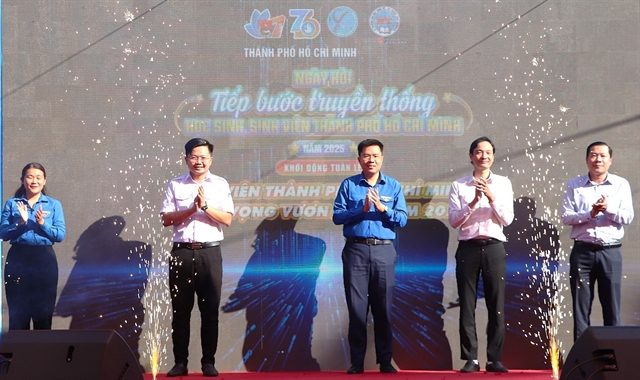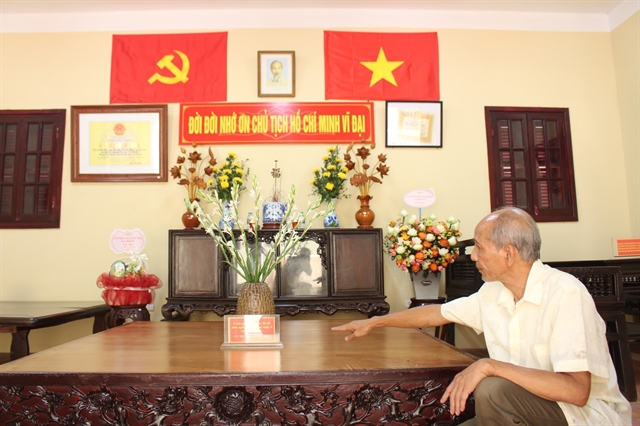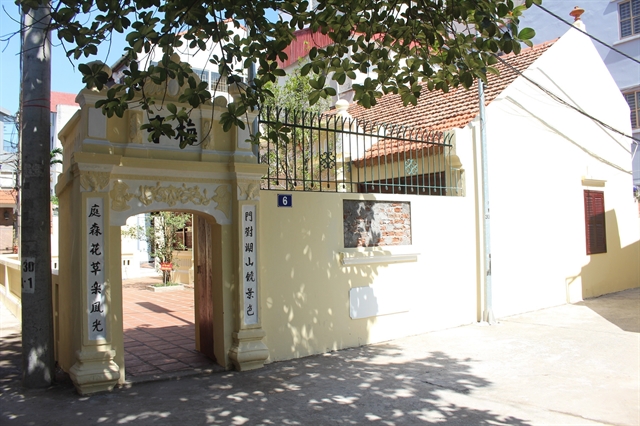 Society
Society

 |
| HISTORICAL HOUSE: The family home of Công Ngọc Dũng, inherited from his grandparents, still preserves the wooden bed that the late President Hồ Chí Minh used during his first visit in 1945. — VNA/VNS Photos Nguyễn Thắng |
HÀ NỘI — As Việt Nam and the capital city prepare to mark the 80th anniversary of the August Revolution and National Day this September, a historic family home on An Dương Vương Street has seen a surge in visitors, drawn by its unique place in Việt Nam’s struggle for independence.
Situated at No 6, Alley 319, An Dương Vương Street (Phú Thượng Ward), the residence is renowned as the first place to welcome late President Hồ Chí Minh upon his return from the Việt Bắc Base in 1945. It was here that he prepared to announce the Declaration of Independence of the Democratic Republic of Việt Nam (now the Socialist Republic of Việt Nam).
Built in 1929 by the family of Công Ngọc Lâm and Nguyễn Thị An, the house is now cared for by their grandson, Công Ngọc Dũng. Between 1942 and 1945, it served as a secret meeting place for revolutionary leaders, a communications hub, a supply point for food and provisions and a shelter for soldiers—always under strict secrecy.
Recalling the stories told by his grandmother and father with pride, Dũng said: “On August 23, 1945, a group of people entered my grandmother’s house and among them was an elderly man with a long beard, bright eyes and a high forehead.
"The man was treated with respect by everyone but the family was not allowed to know who he was."
During the two days the group stayed here, he always woke up early for morning exercises, then worked diligently. Before he left, he met the whole family to thank them.
It was only later that they learned that he was Uncle Hồ himself.
On September 2, 1945, the family attended the historic national gathering at Ba Đình Square. Hearing the man’s voice over the loudspeakers as he read the Declaration of Independence, they were struck by how closely it resembled that of the special guest who had once visited their home, though they were not certain.
Later, they were overwhelmed with joy and pride when informed that the man was indeed Uncle Hồ, but felt a touch of regret for not recognising him sooner.
Over a year later, after returning from the National Cultural Conference, the leader visited the house again on November 24, 1946.
“This time, he came as the president of the country. Despite his countless duties, he still kept his promise to return and visit our family,” said Dũng.
Patriotic tradition
Now an elderly man, Dũng still personally arranges and cleans the furniture, places fresh flowers and offers incense at the altar to President Hồ Chí Minh in the house. He also acts as a guide, welcoming visitors from across Việt Nam and abroad.
Dũng said: “I follow my father’s footsteps in preserving our ancestors’ inheritance. After returning from imprisonment in Côn Đảo in 1954, my father continued to work for the national revolution.
“The most important thing for him was to keep this house as a place to honour President Hồ Chí Minh – this was his wish.”
 |
| TIMELESS DESIGN: The house still retains its original architecture since 1929. |
Dũng’s father, Công Ngọc Kha, designated August 23 – the day the president first visited – as the day to invite those who had secretly worked for the resistance since 1942 to gather and recount their stories.
“Since then, the history they made has become part of my very being,” said Dũng.
After Kha’s passing, the house was recognised as a municipal-level historic site in 2019 and later upgraded to national status in 2021.
It still retains its original, traditional architecture. The family donated the entire house and the surrounding yard to the State.
Decades later, items used by President Hồ Chí Minh remain intact – the wooden bed on which he rested, the copper basin he used – alongside the altar in the central area bearing his portrait, the Party flag, the national flag, and the words “Forever grateful to our great President Hồ Chí Minh.”
Alongside preservation, Dũng has also made efforts to collect more documents and artefacts about President Hồ Chí Minh and the national revolution for display in the house.
“For our family, preserving these items has always been a sacred duty to express our gratitude to President Hồ Chí Minh and the revolution. We never imagined it would one day be recognised as such a significant national historic site. That is a joy beyond anything we dreamed,” Dũng said.
Proud of his family’s patriotic tradition, Dũng often teaches his children and grandchildren to care for the house.
By honouring and preserving these memories of the late president as well as the country, he hopes the spirit of patriotism and revolutionary tradition will continue among future generations. — VNS